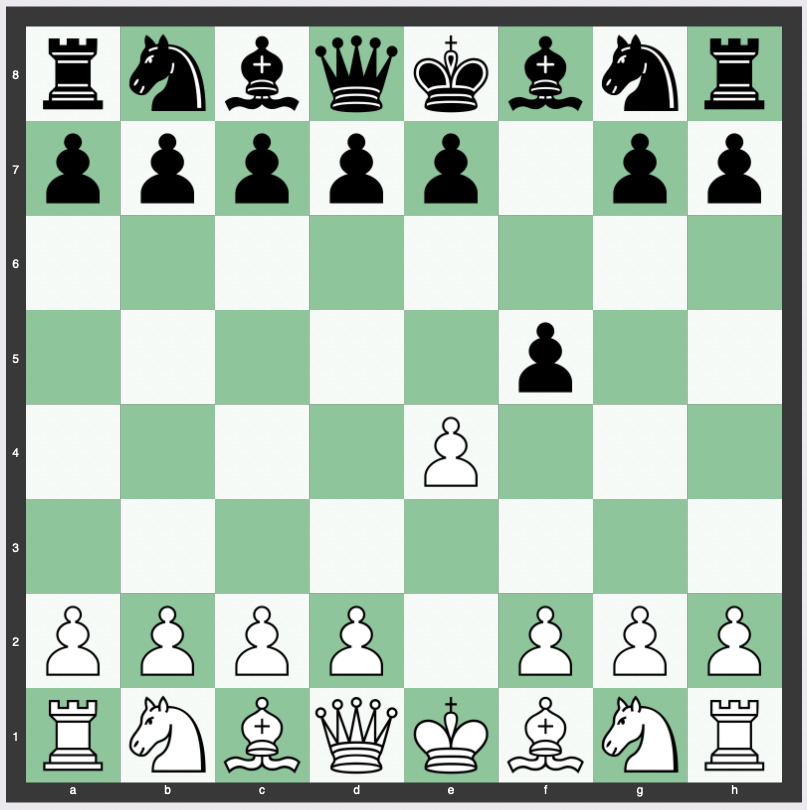The Duras Gambit, classified as one of the Unorthodox Chess Openings, introduces an exciting and often overlooked way to begin a chess game.
It captures the imagination of those looking to escape the well-trodden paths of mainstream chess openings.
With 1. e4 f5, Black sacrifices a pawn in order to seize the initiative.
Below we look into the Duras Gambit, exploring its move order, the theory behind it, its variations, historical context, and its suitability for different levels of players.
Move Order of the Duras Gambit
The move order of the Duras Gambit is:
- e4 f5

This sequence of moves opens the Duras Gambit.
Black responds to White’s central pawn push with a surprising flank pawn move that sacrifices a pawn to accelerate piece development.
Theory, Strategy, and Purpose of the Duras Gambit
The Duras Gambit aims to give Black a lead in development after 2.exf5 Nf6, albeit without much additional compensation for the sacrificed pawn.
The gamble in this opening lies in the challenge it poses to the opponent, often steering the game into less familiar territories.
However, the absence of clear compensation makes this an opening that relies heavily on the element of surprise.
Variations of the Duras Gambit
Two main variations stem from the Duras Gambit.
- 2.exf5 Nf6 – This is the main line that seeks to accelerate Black’s development.
- 2…Kf7 – Also known as the “Fred,” this is considered a joke opening that leads to 3.Qh5+ and Black has to play g6, ruining their kingside position.
Both variations demonstrate the unconventional nature of this gambit.
History of the Duras Gambit
The line was played three times in an exhibition match between Ossip Bernstein and Oldřich Duras.
Though it hasn’t found a firm place in the repertoire of many top players, its appearance in these historical matches adds a sense of intrigue and lends it its name.
Is the Duras Gambit Good for Beginners or Intermediates?
The Duras Gambit is generally not recommended for beginners, as it requires a strong understanding of the underlying strategic ideas and can lead to complex positions.
For intermediate players who are looking for something unconventional and are willing to study the variations in depth, it can be an interesting choice.
How Often Is the Duras Gambit Played at the Grandmaster Level?
The Duras Gambit is rarely seen at the grandmaster level.
Its somewhat speculative nature and lack of a clear edge for Black mean that it has not found favor among the elite players.
This scarcity also contributes to the opening’s mystique and may add to its appeal for club players looking to catch opponents off guard.
How does Magnus Carlsen keep beating GMs with the Duras Gambit!?
Conclusion
The Duras Gambit, with its bold pawn sacrifice and potential for unique positions, represents a quirky and unconventional choice in the chess opening repertoire.
While it may not be suitable for beginners or frequently appear at the top levels of play, it remains an interesting option for those seeking to explore lesser-known paths in chess.
Its historical connection to the match between Bernstein and Duras adds a layer of charm to this gambit.
Whether embraced seriously or simply enjoyed as a departure from the norm, the Duras Gambit invites players to step out of their comfort zone and engage in an adventurous game of chess.


